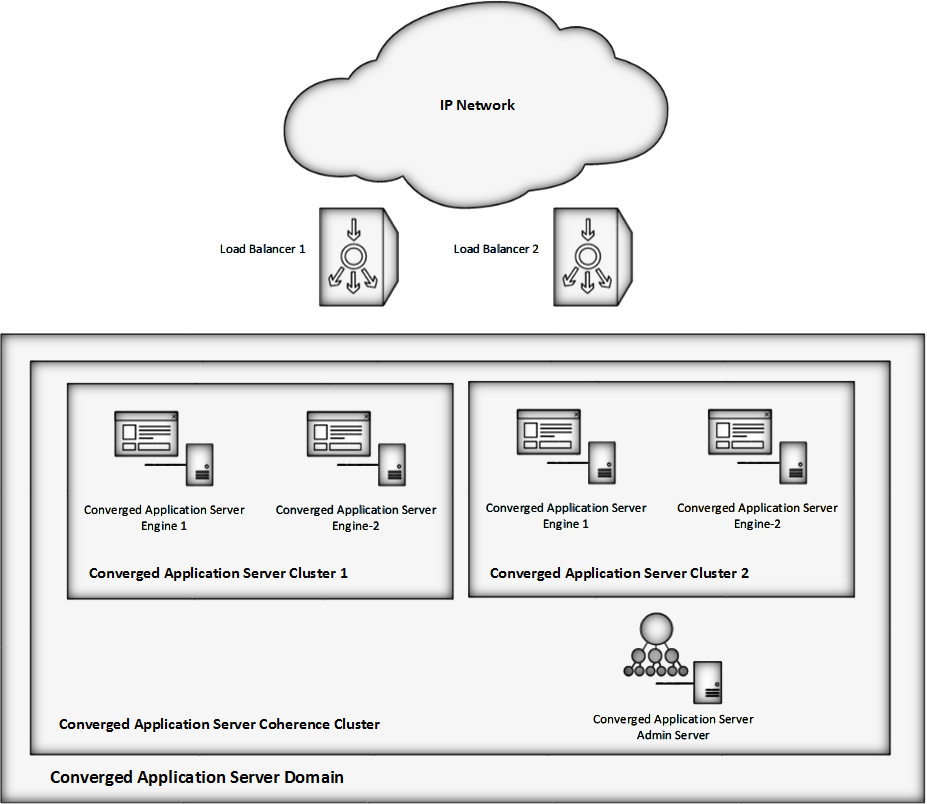Overview of the Cluster Architecture
Converged Application Server itself provides a multi-tier cluster architecture using Oracle Coherence. Coherence clusters consist of multiple managed Coherence server instances that distribute data in-memory to increase application scalability, availability, and performance. An application interacts with the data in a local cache and the distribution and backup of the data is automatically performed across cluster members.
Coherence integration aligns the lifecycle of a Coherence cluster member with the lifecycle of a managed server: starting or stopping a server Java Virtual Machine (JVM) starts and stops a Coherence cluster member. The first member of the cluster starts the cluster service and is the senior member.
Converged Application managed servers that are associated with a Coherence cluster are referred to as managed Coherence servers. Managed Coherence servers in each tier can be individually managed but are typically associated with respective Converged Application Server clusters.
A standard load balancing appliance is used to distribute traffic across the engines in the cluster. It is not necessary that the load balancer be SIP-aware; there is no requirement that the load balancer support affinity between Engines and SIP dialogs or transactions. However, SIP-aware load balancers can provide higher performance by maintaining a client's affinity to a particular engine.
Figure 4-1 shows an example Converged Application Server cluster in which traffic from the IP Network is routed through two load balancers, Load Balancer 1 and Load Balancer 2, which distribute requests to the four Converged Application Server engines in the clusters, Cluster 1 and Cluster 2. Within the same Coherence cluster a single Administration Server handles administration tasks for all of the Converged Application Server engines.
Figure 4-1 Example Converged Application Cluster

Note:
There is no arbitrary limit to the number of engines or physical servers within a Coherence cluster.
Geographically-Redundant Installations
Converged Application Server can be installed in a geographically-redundant configuration for implementations that employ distributed data centers, and require continuing operation even after a catastrophic site failure.
The geographically-redundant configuration enables multiple Converged Application Server installations to replicate call state transactions between one another. If a particular site's installation were to suffer a critical failure, the administrator could choose to redirect all network traffic to the secondary, replicated site to minimize lost calls.
For information on configuring geographical redundancy, see "Configuring Geographically-Redundant Installations" in Converged Application Server Administrator's Guide.